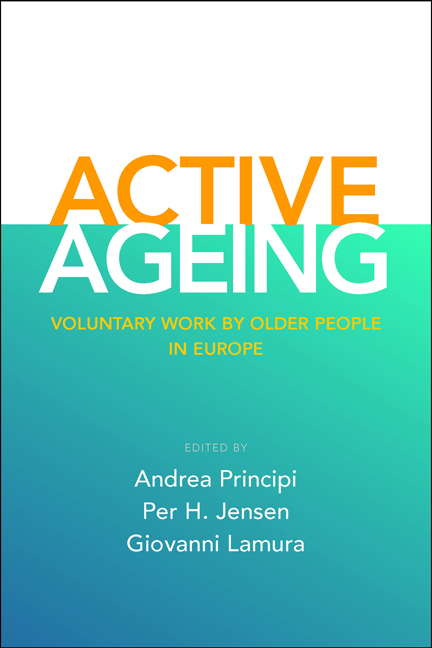Book contents
- Frontmatter
- Contents
- List of tables and figures
- Notes on the contributors
- Acknowledgements
- Foreword
- Part I Realising volunteering by older people in Europe An overarching approach
- Part II Opportunities and restrictions for older volunteers National experiences
- Part III Opportunities and restrictions for older volunteers Case studies in European voluntary organisations
- Part IV Conclusions
- Index
twelve - Organisational reflections on the impact of working and caring on older volunteering
Published online by Cambridge University Press: 05 March 2022
- Frontmatter
- Contents
- List of tables and figures
- Notes on the contributors
- Acknowledgements
- Foreword
- Part I Realising volunteering by older people in Europe An overarching approach
- Part II Opportunities and restrictions for older volunteers National experiences
- Part III Opportunities and restrictions for older volunteers Case studies in European voluntary organisations
- Part IV Conclusions
- Index
Summary
Introduction
Voluntary organisations are conscious of the fact that volunteers have other potential roles, notably, as members of the paid labour force, as informal carers (particularly to family members), and in other forms of informal support to family and community. But this does not mean that all are concerned about the implications of these roles. An organisation in whatever country or sector of activity may be currently experiencing no volunteer recruitment difficulty at all, so its attention is drawn to other matters of policy and practice. Indeed, in general, the voluntary organisations taking part in this study were pre-occupied with managing and funding their present activity rather than with the long-term supply of volunteers. However, within their responses were various lines of thinking that indicate a more nuanced assessment of the implications of external labour market situations and the impact of demographic change on the timing and pattern of caring responsibilities.
Following the theoretical approach adopted in the book as a whole and outlined in Chapter Two, this chapter deals, primarily, with what is termed the ‘meso level’, namely, the situations and perceptions of voluntary organisations. The focus is on older volunteers and the external conditions affecting their volunteering, as viewed currently by the voluntary organisations. The external conditions considered are those that act on the propensities and opportunities to volunteer and that affect the operations of the organisation through the influence of working and caring activities. This is in contrast to internal conditions created by voluntary organisations themselves.
The external conditions may be related to the notion of the ‘welfare mix’ used in Chapter Two that refers to the ‘interactions/divisions of responsibilities’ between the market and institutional conditions that comprise the external environment – family, labour market, care system and voluntary sector. So this chapter, in part, deals with how voluntary organisations, in effect, view the impact of the ‘welfare mix’ on older volunteering – that is, how the latter is conditioned by the former.
Previous research on the impact of work and informal care on the volunteering of older people has concentrated much more on the individual level, namely, volunteers or potential volunteers, than on those who might recruit and deploy them. The imbalance in available empirical evidence also applies to the relative efforts devoted to theorising.
- Type
- Chapter
- Information
- Active AgeingVoluntary Work by Older People in Europe, pp. 275 - 296Publisher: Bristol University PressPrint publication year: 2014

